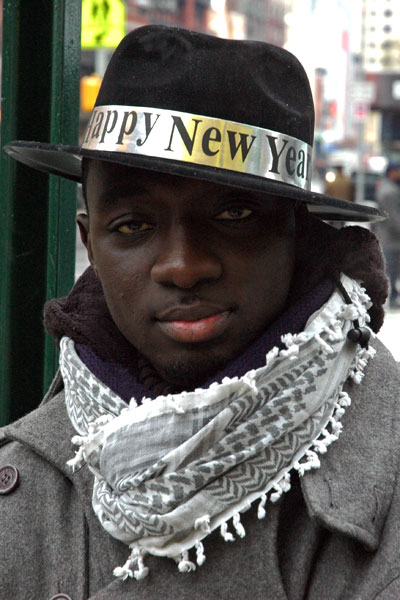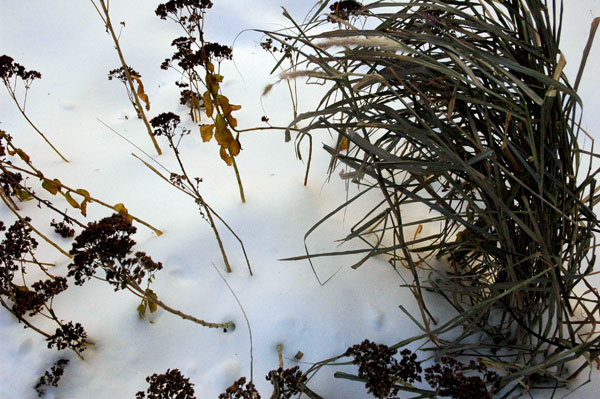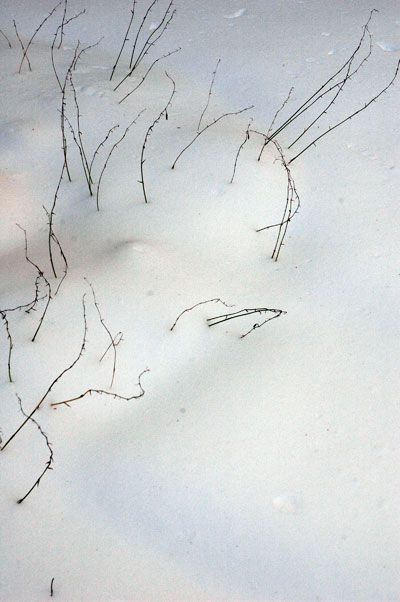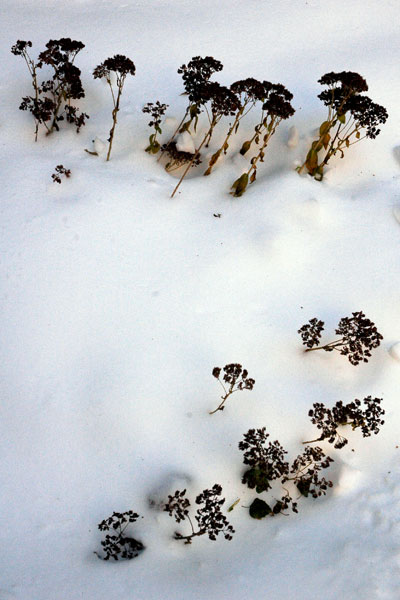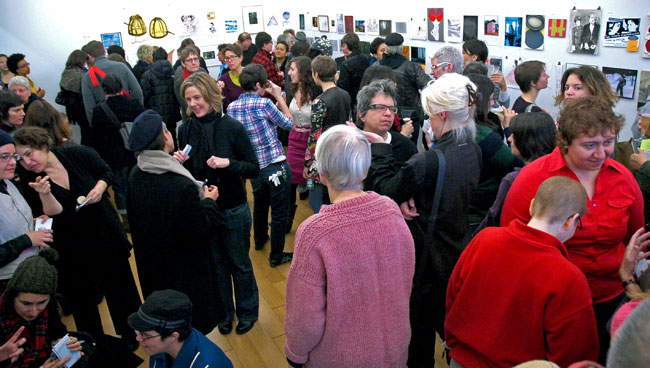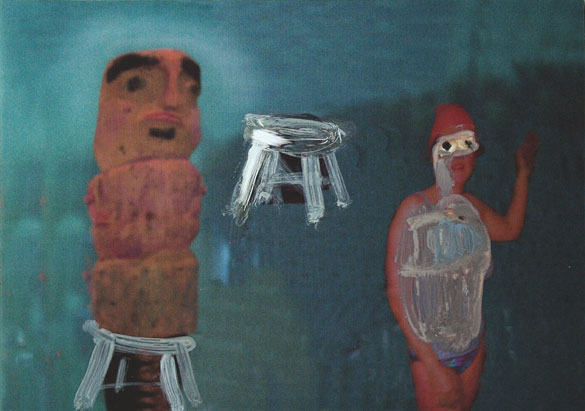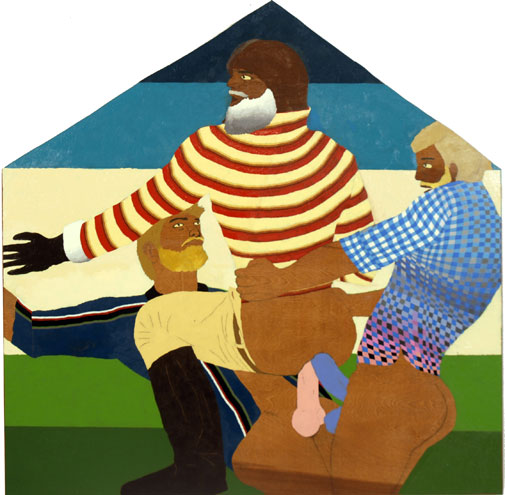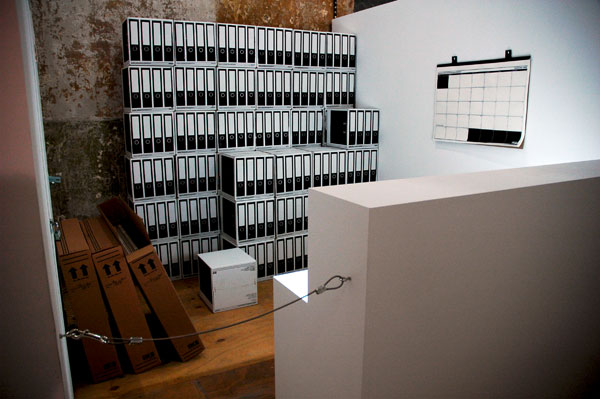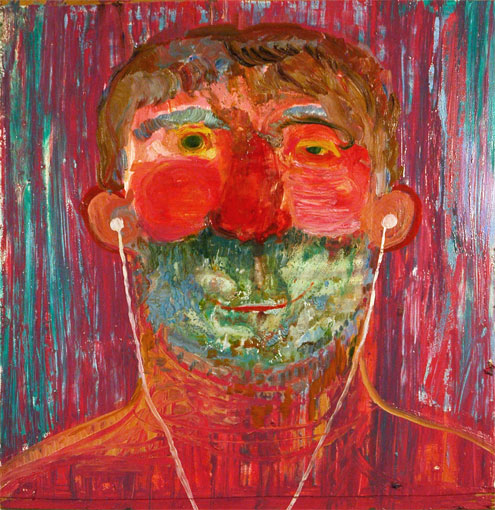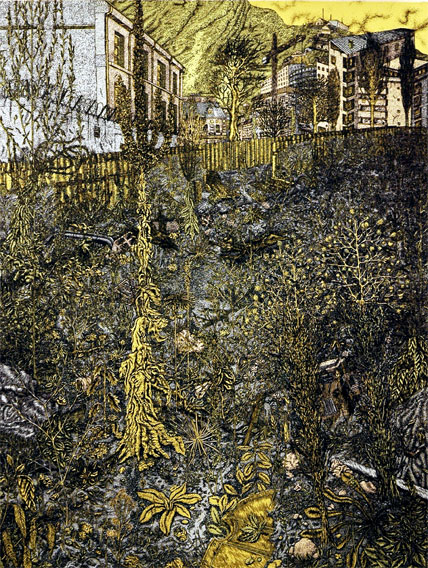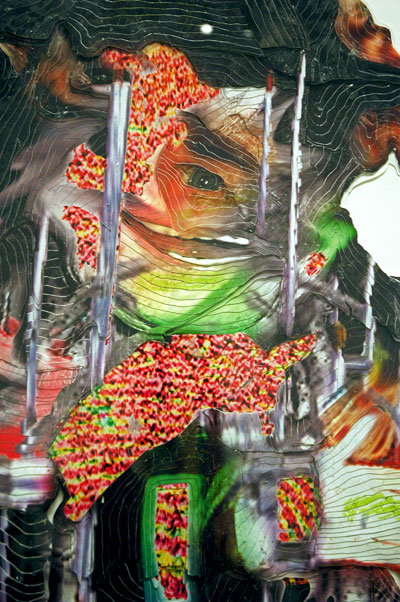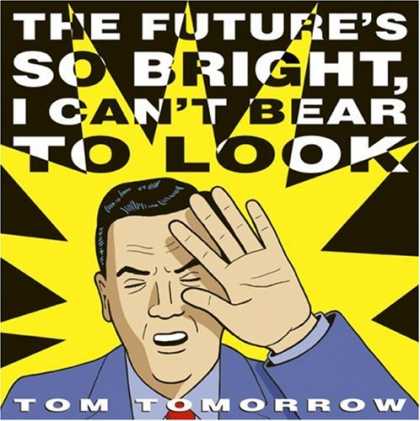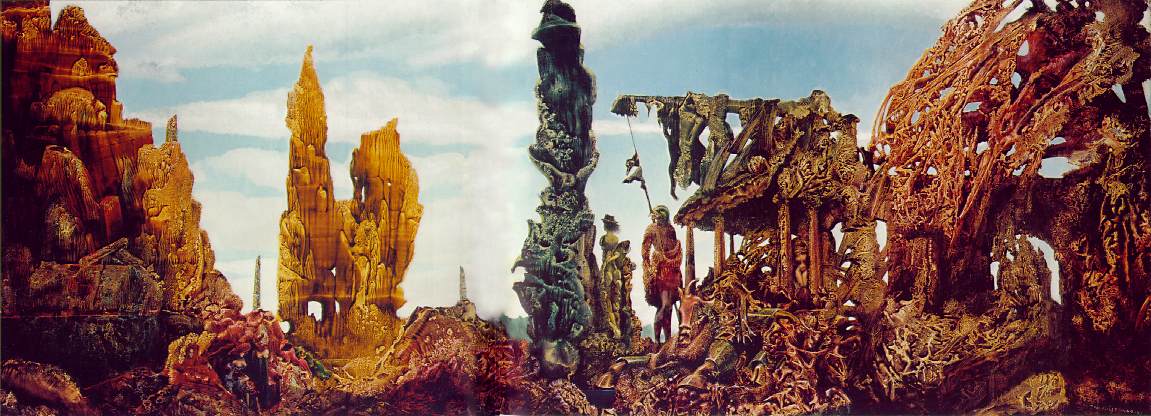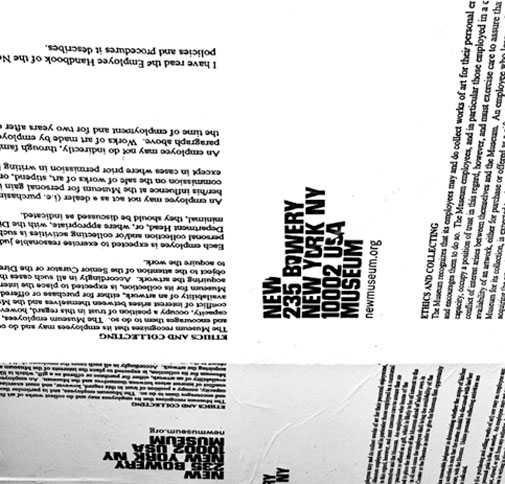
Kate Fauvell/Daniel Turner, Visitor Services/Security Guard Untitled [detail of ceiling installation]
Is an institution doing its job if its concern about ethics goes no further than the printed code it submits to its employees? A year ago a little-noticed exhibition mounted only ten blocks from the New Museum, a New York institution which is now the subject of a lively, and international, controversy about its curatorial decisions and ethical practice, seems to have anticipated some of the issues which were raised in reaction to a program announcement it released last September.
THE BACKGROUND: On September 25th this site became the first of many blogs to cry foul over NuMu's decision to host the art collection of its billionaire trustee, curated by a celebrity artist of whose work he is the foremost collector, the Museum adding that the exhibition was to be only the first of a number of similar ventures in a series it would call "the imaginary museum".
Since that time the story has snowballed dramatically.
In November of 2008 a group of artists mounted an exhibition at The Stanton Chapter Gallery on the Lower East Side, not far from the recently-opened new home of the New Museum. They did it entirely on their own, but their special relationship to NuMu was described in the title of the show, "New Work: Art from the Workers of The New Museum". The installation included only art created by people working at the museum, and their capacities there were described on the art labels immediately after their names.
Daniel Turner, one of the artists in the show, has written me that during the month the exhibition was open "there was high tension in the museum, a few staff members were afraid of getting fired etc. In the end several of the 'junior staff'* removed their works from the exhibition out of fear".
Turner was not the only one who thought it was a very good show, although it appears to have been much overlooked at the time - except by the New Museum itself. He now believes that, because of NuMu's September 24th announcement [the Times basically copied the press release the next day] of certain future installation practices, and the resulting and mushrooming discussion of general museum ethics and art market practice (see a short selection of recent discussions below), the 2008 show is definitely worth a first, or second, look, and argues that its merits should now command even more attention than it should have a year ago.
He wrote further that the exhibition catalog is "very rich with this topic" (ethics and practice) in general. It includes several very interesting essays, one by Ruby McNeil, the daughter of the founder of the Museum, Marcia Tucker. Although I missed the show itself, some of the work looks really great, and I totally agree with Turner about relevance, especially after looking at the piece he and Kate Fauvell created for the show (the New Museum code of ethics enlarged and wheat pasted on the gallery ceiling), and going on to read the actual text of that code, reproduced inside the catalog. The image at the top of this post is a detail of his and Fauvell's installation.
I've looked at the catalog in pdf form, and a printed copy is available through Lulu here.
The New Museum code of "ethics and collecting" a copy of which Fauvell and Turner mounted on the ceiling of the Stanton Chapter Gallery, is reproduced just below. I think it's particularly interesting In the context of current discussions both within and outside of the art world about institutional principles, as this code is addressed only to employees:
ETHICS AND COLLECTING
The Museum recognizes that its employees may and do collect works of art for their personal enjoyment, and encourages them to do so. The Museum employees, and in particular those employed in a curatorial capacity, occupy a position of trust in this regard, however, and must exercise care to assure that no conflict of interest arises between themselves and the Museum. An employee who learns of the availability of an artwork, either for purchase or offered as a gift, which is likely to be of interest to the Museum for its collection, is expected to place the interests of the Museum ahead of his/her own in acquiring the artwork. Accordingly in all such cases the employee shall bring the availability of the object to the attention of the Senior Curator or the Director in order to give the Museum first opportunity to acquire the work.
Each employee is expected to exercise reasonable judgment in determining whether the scope of his/her personal collection and/or collecting activities is such that the matter should be discussed with his/her Department Head, or, where appropriate, with the Director. Unless personal collection activities are minimal, they should be discussed as indicated.
An employee may not act as a dealer (i.e. purchasing and selling works of art) nor may an employee use her/his influence at the Museum for personal gain in the art market. An employee may not accept any commission on the sale of works of art, stipend, or gift from any collector, dealer, artist, or institution, except in cases where prior permission in writing is given by the Director.
An employee may not do indirectly, through family or friends, anything she/he may not do in the paragraph above. Works of art made by employees or family of employees will not be exploited during the time of employment and for two years after employment has terminated.
I have read the Employee Handbook of the New Museum of Contemporary Art and understand the policies and procedures it describes.
[below that line are spaces for name, signature and date]
Unfortunately one doesn't have to be a staff member of NuMu (either senior or "junior") to suspect or actually assert that this code of ethics, and similar protocols maintained by other arts institutions, may be honored in the breach more than the observance.
But, returning to my initial statement at the top, I think the big story isn't about how much the New Museum, or any arts institution, should worry about what its artist employees are up to, but whether the guardians at the top are properly performing the stewardship with which they have been entrusted.
*
Artist and writer Maureen Connor expands upon the "junior staff" identification in this excerpt from her extended essay in the catalog:
As I understand it the New Work show was initiated by the New Museum staff (later defined as "junior" staff by management), not exactly as a guerilla action, but certainly one that arose from a need for agency and for some acknowledgment of their identity as artists. A proposal for New Work expresses a desire to “further the mission of the museum…new art, new ideas…”, directly quoting from the New Museum's website banner — “Manhattan's only dedicated contemporary art museum…a leading destination for new art and new ideas.” Given the museum's stated mission, one would hardly expect the artist members of its staff to need permission from upper management to organize and participate in an offsite show of their work. With the broad range of alternative art practices the New Museum supports and represents, one would think that the curators would recognize how this show could embody a radical approach to exhibition thematics that, to further quote from New Work's proposal,“ allows the audience to experience a museum in a completely new way…we posit the museum as the people who make a building and its program happen.”
This may only be a footnote to the argument of this post, but I think it has a significance well beyond the recitation of a fact:
I've noticed that there are no staff credits on the New Museum site, only the names of the trustees and benefactors, who of course don't need the reinforcement artist-employee handlers, curators, guards, ticket takers, maintenance workers and coat checkers do. This is apparently standard, but not universal, museum practice. And just why would this seem to anyone like a good idea?
Finally, an idea of the nature of the ongoing discussion about museum practice, once it was picked up by mediums other than individual blogs, can be found in this very abbreviated list, which begins with the first critical treatment of the story by the New York Times:
- "Some Object as Museum Shows Its Trustee’s Art" in the Times November 10
- Georgina Adams. "Art for whose sake?", in the Financial Times
- David Goodman interviews William Powhida on the BOMBlog: "I don’t think the New Museum drawing would have elicited the kind of reactions it did, [if] there wasn’t such a problematic situation."
- Powhida inside "the belly of the beast": a New York Times report from the Basel Miami show
- Bettina Korek on the Ovation TV blog, describing the "Elephant in the Room"
- Ben Davis on artnet, under "politics", with: "the coronation of New York artist William Powhida as the anti-Koons"
[image, courtesy of the artists, from the "New Work" catalog]

